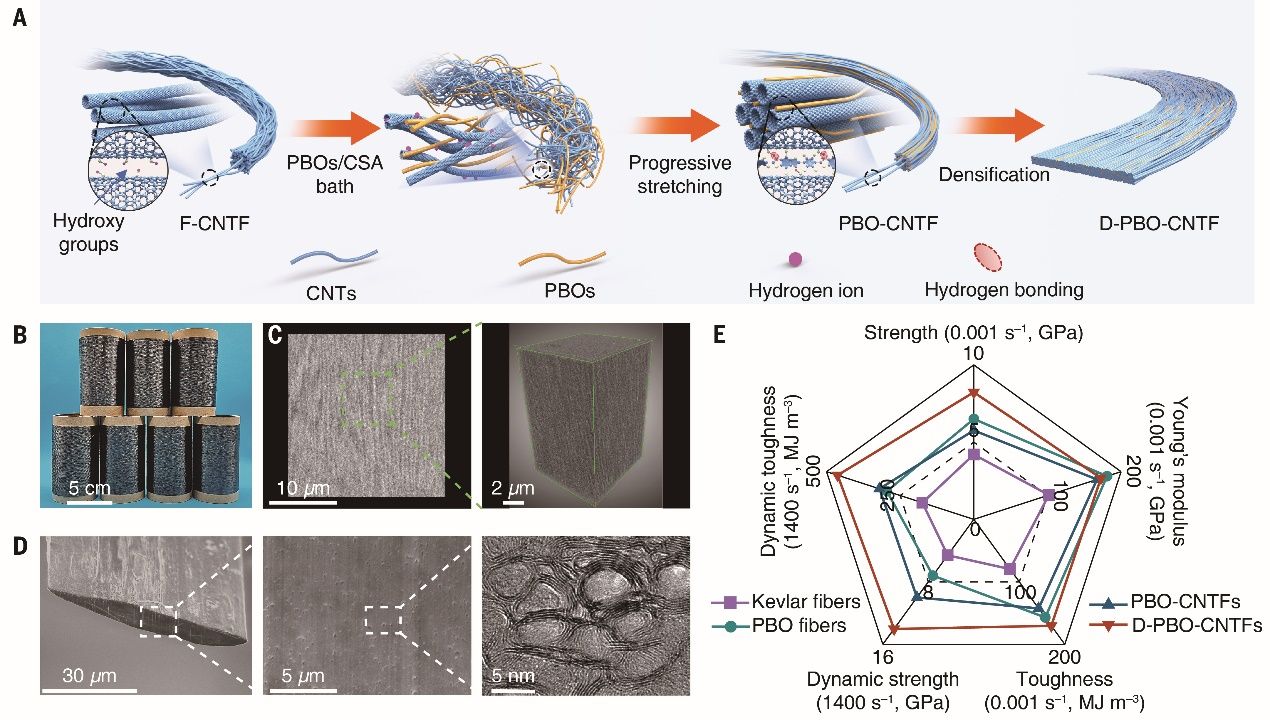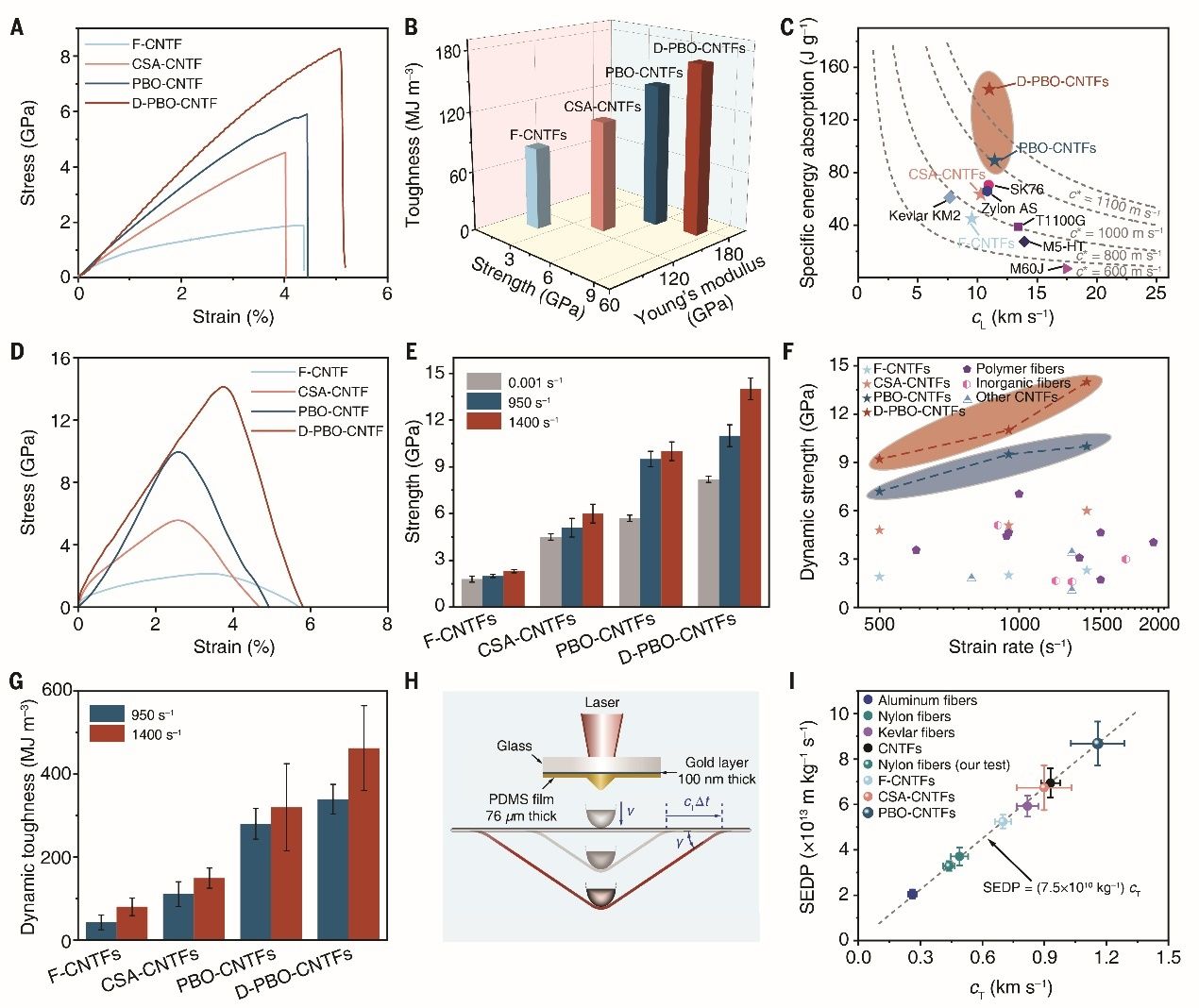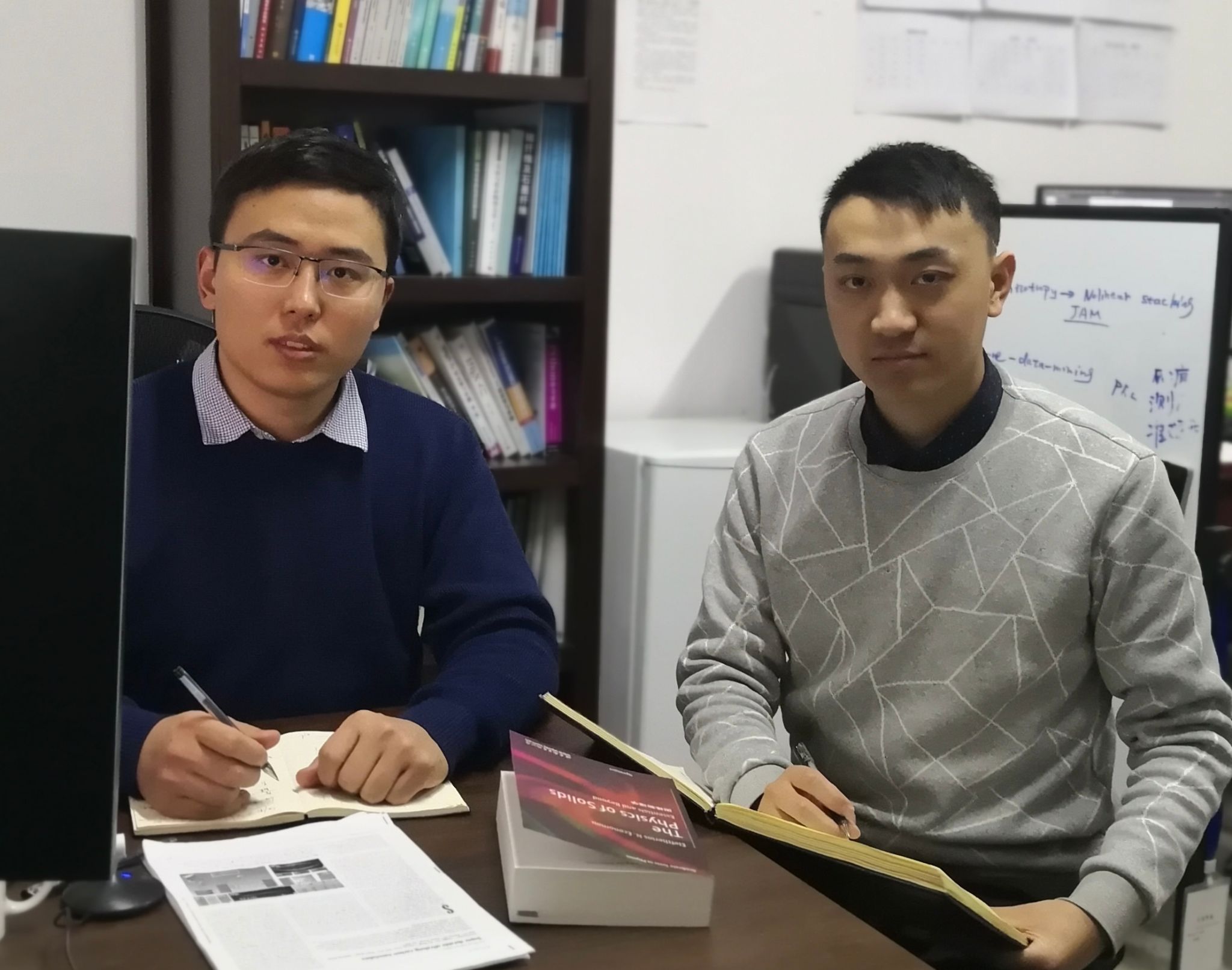On June 20, a team led by Academician Zhang Jin from Peking University, Associate Researcher Jian Muqiang from the Beijing Graphene Institute (BGI), in collaboration with a team led by Associate Professor Gao Enlai from the Department of Civil and Architectural Engineering at Wuhan University, researcher Wu Xianqian from the Institute of Mechanics at the Chinese Academy of Sciences, and researcher Zhang Yongyi from the Institute of Nanotechnology and Nanobionics at the Chinese Academy of Sciences, jointly published a research paper titled Carbon nanotube fibers with dynamic strength up to 14 GPa in the top journal Science. The first authors of the paper are postdoctoral fellow Zhang Xinshi from Peking University, research assistant Lei Xudong from the Institute of Mechanics at the Chinese Academy of Sciences, and PhD candidate Jia Xiangzheng from Wuhan University. Researchers Zhang Yongyi and Wu Xianqian, Associate Professor Gao Enlai, associate researcher Jian Muqiang, and Academician Zhang Jin are the corresponding authors of the paper.

Carbon nanotubes, known for their excellent properties such as light weight, high strength, high modulus, high electrical conductivity, and high thermal conductivity, are considered ideal building blocks for a new generation of high-performance fibers. However, due to the challenges of fiber structure assembly, the strength of macro-assembled carbon nanotube fibers still falls far short of their ideal strength.
The research team worked closely together and proposed a method for preparing high-dynamic-strength carbon nanotube fibers: introducing PBO to enhance the interaction between carbon nanotubes, mechanical training to improve orientation, and mechanical processing to enhance fiber density, achieving carbon nanotube fibers with a dynamic strength of up to 14 GPa. The research team delved into the mechanical behavior of carbon nanotube fibers under high strain rate loading based on micro-scale high-speed impact tensile experiments. With increasing strain rates, the fibers undergo a transition in failure mode from ductile to brittle, showcasing a significant strain rate strengthening effect. At a strain rate of around 1400 s–1, the dynamic strength of the fibers reaches 14 GPa, surpassing existing high-performance fibers, indicating the enormous potential application of carbon nanotube fibers in impact protection applications. Experimental and multi-scale theoretical analyses suggest that inter-tube interactions, orientation, and fiber density are key factors in enhancing fiber mechanical performance. Under high-speed loading conditions, the proportion of carbon nanotubes fracturing within the fibers significantly increases, transitioning the fiber failure mode from inter-tube slippage to more cooperative fracture of carbon nanotubes, thereby endowing the fibers with excellent dynamic mechanical properties.

Preparation, structure, and properties of carbon nanotube fibers
(A) Multi-scale structural optimization strategy for the preparation of high-performance carbon nanotube fibers
(B-D) Structural characterization of carbon nanotube fibers
(E) Comparison of mechanical properties of carbon nanotube fibers with other fibers

Mechanical properties of carbon nanotube fibers
(A) Stress-strain curve of carbon nanotube fibers under quasi-static loading
(B) Tensile strength, Young's modulus, and toughness of carbon nanotube fibers under quasi-static loading
(C) Comparison of specific energy absorption and longitudinal wave velocity of different fibers
(D) Stress-strain curve of carbon nanotube fibers under high strain rate loading
(E) Tensile strength of carbon nanotube fibers under different strain rates
(F) Comparison of dynamic strength of carbon nanotube fibers with other fibers
(G) Dynamic toughness of carbon nanotube fibers under different strain rates
(H) Schematic diagram of laser-induced high-speed transverse impact on fibers
(I) Comparison of specific energy dissipation power of different fibers

The right Jia Xiangzheng, the left is Gao Enlai

The first on the right is Jia Xiangzheng, the third on the right is Gao Enlai
Paper link: https://www.science.org/doi/10.1126/science.adj1082
(Photo credit: School of Civil Engineering and Architecture; edited by Zhao Jifan)
Rewritten by Shi Yuqing


